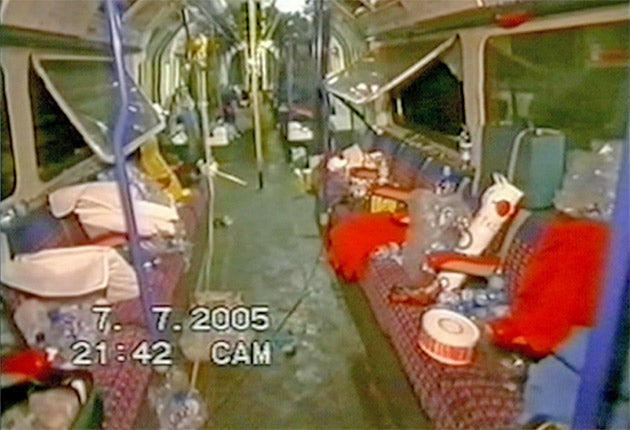Bloodstains and belongings visible amid the wreckage

Your support helps us to tell the story
From reproductive rights to climate change to Big Tech, The Independent is on the ground when the story is developing. Whether it's investigating the financials of Elon Musk's pro-Trump PAC or producing our latest documentary, 'The A Word', which shines a light on the American women fighting for reproductive rights, we know how important it is to parse out the facts from the messaging.
At such a critical moment in US history, we need reporters on the ground. Your donation allows us to keep sending journalists to speak to both sides of the story.
The Independent is trusted by Americans across the entire political spectrum. And unlike many other quality news outlets, we choose not to lock Americans out of our reporting and analysis with paywalls. We believe quality journalism should be available to everyone, paid for by those who can afford it.
Your support makes all the difference.As the police camera panned across the mangled and blood-spattered Tube carriages, the inquest saw in graphic detail the carnage caused by the four bombers on 7 July, 2005.
Windows and doors had been smashed and buckled, littering the floor with glass shards. In some cases the doors had been blown off the train and lay by the side of the tracks. Hand rails were bent and the roofs of some of the carriages had collapsed.
On the floors, bloodstains were visible alongside newspapers which carried reports of the previous day's news that London had been chosen to host the 2012 Olympic Games. Also present were the belongings of those who had either died or had fled the carriage – a hooded top, a dark blue suitcase, a leather satchel. The footage had been filmed hours after the trains had been evacuated and the signs of how paramedics had battled to save the dying were still visible. Stretchers, surgical gloves and first aid kits lay on the floors.
The footage was filmed by forensic officers at the site of the bombings at Edgware Road, Aldgate and Russell Square. It has never been shown previously. Before playing it, Hugo Keith QC warned of the distressing detail. He said: "This part of my opening will form the most distressing part of the evidence...It is distressing because it shows the place where so many people tragically died, although great care has been taken to ensure we do not see any of the deceased."
Despite the precautions, all of the footage has not been released by the court. The Metropolitan Police objected on the grounds that the images of carnage would be seized upon and used by extremists as propaganda. Last night, only a 30-second clip was released to the media.
The inquest was also shown diagrams of where those who died had been sitting or standing. Many of the victims on the bus had been beside Hasib Hussain when he detonated his bomb, and were blown out of the top deck on to the road below.
On the Piccadilly Line between King's Cross and Russell Square, more than 1,000 people were on the "packed" Tube. For this reason, Jermaine Lindsay was able to claim 26 victims – more than double the amount of those killed on the other two trains combined. Amazingly, those sitting closest to Shehzad Tanweer on the train at Aldgate survived the blast.
Join our commenting forum
Join thought-provoking conversations, follow other Independent readers and see their replies
Comments